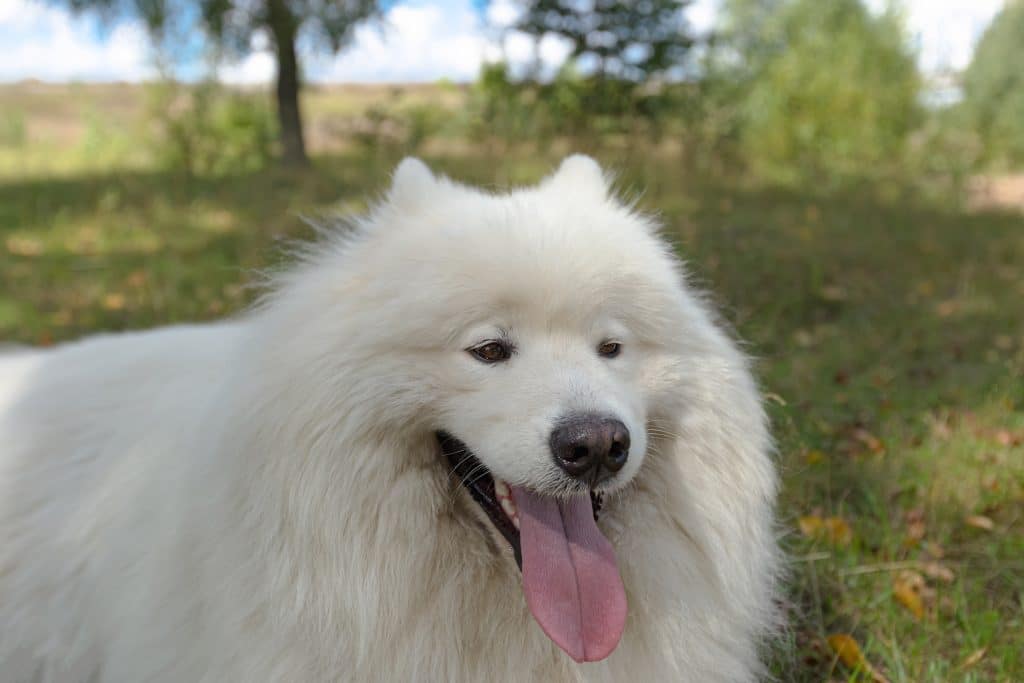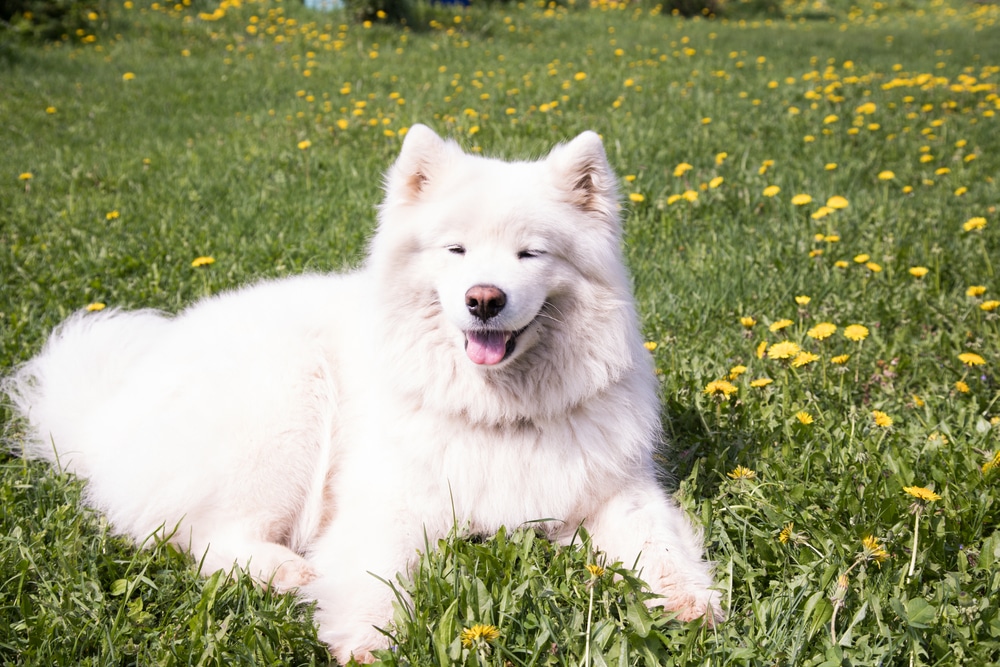Dog coats vary more than color, texture, and length. Furthermore, they can be separated into single-coat and double-coat groups. So, what are double coats, and do Samoyeds have one?
Double-coated dogs have a dense undercoat of small hairs that are woolly in texture below a top coat of longer hairs known as guard hairs. A dog is protected from extreme heat and cold by its thick undercoat, and its top coat helps in avoiding moisture and debris buildup. Samoyeds do have double coats.
Table of Contents
What Are Double Coats?
You must be aware of the sort of coat your dog has before you can properly groom it. We will briefly cover the fundamentals of double-coated dogs, several breeds that possess this trait, and care instructions.
Double-coated dogs have a dense undercoat of small hairs that are woolly in texture beneath a top coat of longer hairs known as guard hairs. A dog’s fluffier appearance indicates that its undercoat is denser.
This means that you’re in it for the long haul when it comes to grooming. A dog is protected from extreme heat and cold by this thick undercoat, while the top coat aids in preventing moisture and debris buildup.
Importance Of Double Coats To Dogs Like Samoyeds

The undercoat keeps a dog warm in the winter, and in the summer, it keeps them cool. If your dog has a well-kept coat with no dead or loose undercoat, it will keep it warm and dry in the winter. It functions as a form of air conditioning throughout the heat.
Your dog has two coats, which is exactly what a double coat means! You’ll be doing a lot of vacuuming if you despise shedding though. A dog with a single coat has a single layer of hair, whether it sheds or not.
Double-coated dogs, most notably Huskies, shed a lot. These dogs have a very dense, fluffy, and soft undercoat. The top layer is created by longer hairs that extend past the undercoat. Double-coated dogs always appear extremely fluffy as a result.
One of the biggest myths about dogs with double coats is that they must be hot because of all their fur, especially considering that the Husky and Samoyed are from the chilly Siberian environment.
Many individuals wrongly think shaving part of that fluff off would be necessary to reduce some heat but don’t do this!
It is pretty simple if you think about it. Two coats help dogs manage their body temperatures in both the cold and the heat.
It’s difficult to believe that a dog with a thick covering of fur could stay cool in a hot environment, but it’s true. The outercoat’s function is to withstand the current weather. In other words, it functions similarly to an insulator, which retains cool temperatures inside and outside.
Dog Coat Types
Dog coats come in a variety of styles. One of a dog’s most distinctive qualities is the sort of coat it has, which can range from the tidy, flat coat of the Labrador Retriever to the thick, shaggy mop of the Old English Sheepdog.
The term “dog coat type” describes a dog’s length, texture, and type of fur, including whether it has a double or single coat. Different coat varieties affect your furry best friend’s requirement for a dog jacket in cold weather and necessitate different care techniques and obstacles (particularly for new owners).
Double-Coated Dog Breeds
Some of the breeds that have double coats include:
- Siberian Huskies
- Samoyeds
- Golden and Labrador Retrievers
- Cavalier King Charles
- Pomeranians
- Chow Chows
- Border Collies
- Newfoundlands
- Corgis
- German and Australian Shepherds
Grooming Tips For Double-Coated Dogs
Because double-coated breeds shed so much, appropriate grooming is crucial. Hairs in the undercoat will become entangled in the top coat when you start to neglect brushing, resulting in mats and tangles.
Although a dog will always shed, regular grooming sessions will reduce the likelihood of allergies caused by dogs. Make use of an undercoat grooming rake to remove loose and dead hairs from your dog’s undercoat.
You must brush your dog at least twice or three times every week to avoid mats and tangles. Use a wire pin brush or comb to go over your dog’s top coat to remove dead and stray hairs. Also, use a wide-tooth comb to remove matting and tangles.
To avoid accidentally cutting your dog’s skin when removing one, squeeze the fur as near as you can to the skin.
Frequently Asked Questions
Here are some answers to more questions you might have.
Are There Any Triple-Coated Dog Breeds?
Many ancient breeds we still see today are referred to as having an “Arctic” or “triple” coat, which is a double coat with two layers of undercoat rather than one. Some dog groomers classify the Samoyed, Chow Chow, Pomeranian, Siberian Husky, and Alaskan Malamute as triple-coated breeds.
Although the definition of a triple coat varies depending on who you ask, in general, a triple-coated dog has two layers of undercoat.
How To Tell If Your Dog Is Double-Coated?
You can easily test this. Thoroughly brush its hair, then take the hair out of the brush to feel it. Your dog is double-coated if you notice two different types of fur, one rougher and one softer.
In Conclusion: What Are Double Coats, And Do Samoyeds Have One?
You may have asked yourself before, “What are double coats, and do Samoyeds have one?” and now you have all the answers. Double coats make Samoyeds and many other breeds fluffy and cute but also always in check with the weather.
So, what do you think about Samoyeds and double coats? Let us know in the comments below!
